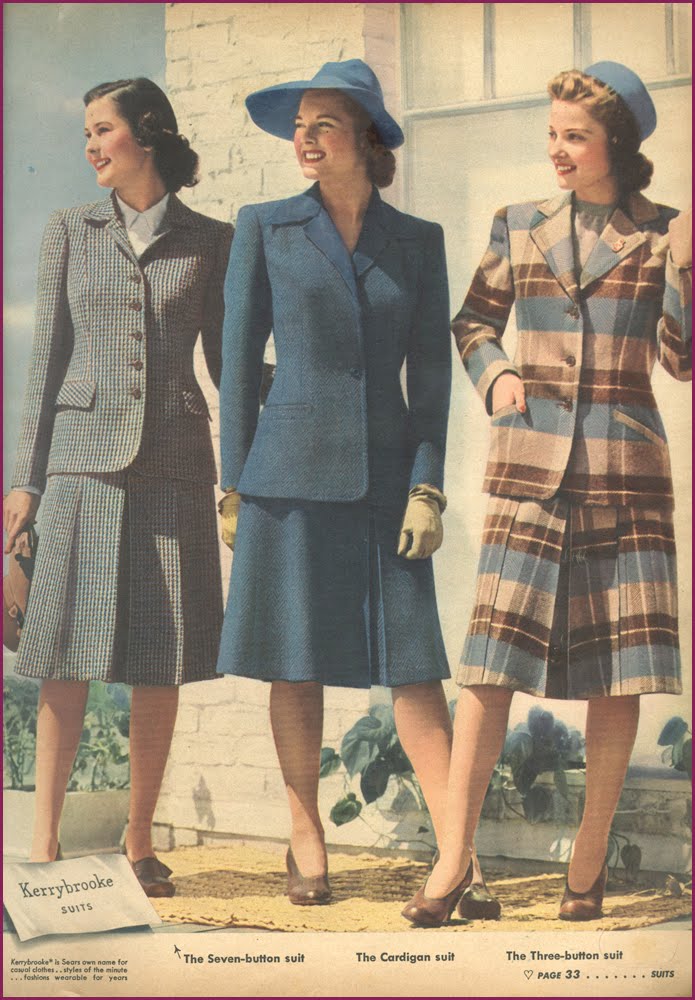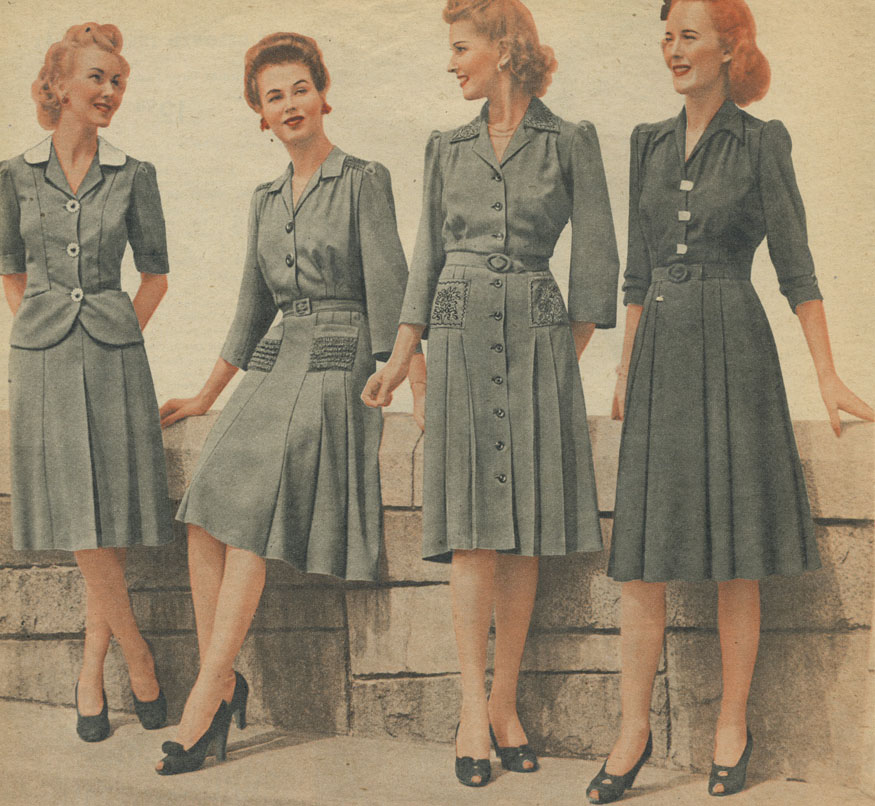Victory Rolls & Rationed Glamour: What Was the Fashion in the 1940s?
Imagine a world grappling with global conflict, yet simultaneously obsessed with a silhouette defined by sharp shoulders and cinched waists. That was the dichotomy of the 1940s, a decade where fashion became a fascinating reflection of societal shifts, resource scarcity, and an unwavering spirit of resilience. What was the fashion in the 1940s? It was a fascinating blend of practicality, ingenuity, and a touch of Hollywood glamour.
The 1940s marked a stark departure from the flowing silhouettes of previous decades. The outbreak of World War II cast a long shadow, impacting every facet of life, including fashion. Fabric rationing became the norm, forcing designers to reimagine their craft with limited resources. Gone were the days of extravagant fabric usage; instead, hemlines rose, silhouettes were streamlined, and every inch of material was used with meticulous care.
Despite these limitations, 1940s fashion thrived, embracing resourcefulness as the mother of invention. Women learned to repurpose old garments, turning curtains into dresses and military surplus into stylish separates. This 'make-do and mend' attitude fostered a sense of community and resourcefulness that became synonymous with the era.
Beyond the limitations, 1940s fashion was also heavily influenced by the silver screen. Hollywood stars, with their captivating on-screen personas, became style icons, dictating trends that resonated with women seeking an escape from the realities of wartime. Actresses like Joan Crawford, with her powerful shoulders and tailored suits, and Lauren Bacall, known for her masculine-inspired attire, embodied the strong, independent woman of the 1940s.
The 1940s weren't just about practicality and wartime austerity; they also gave rise to iconic trends that continue to inspire contemporary fashion. The era's signature silhouette, with its emphasis on a defined waist and strong shoulders, was often achieved using shoulder pads, a trend that has seen numerous revivals in modern fashion. The A-line skirt, another 1940s staple, provided a flattering and versatile option that transcended wartime restrictions. Accessories played a crucial role, with headscarves serving both practical and stylish purposes, protecting hairstyles while adding a touch of color and flair.
Advantages and Disadvantages of 1940s Fashion
| Advantages | Disadvantages |
|---|---|
| Promoted resourcefulness and creativity in design and everyday wear | Fabric rationing limited design choices and availability |
| Introduced iconic, flattering silhouettes that continue to inspire today | Emphasis on traditional gender roles reflected in clothing styles |
| Emphasized practicality and functionality in clothing | Wartime shortages could make obtaining certain materials difficult |
Common Questions About 1940s Fashion
1. What were the most popular fabrics used in 1940s clothing? Due to rationing, fabrics like cotton, wool, and rayon were commonly used. Designers also innovated with alternatives like crepe, jersey, and even parachute silk.
2. What shoes were popular in the 1940s? Practicality was key, leading to the popularity of sturdy shoes like oxfords, wedges, and platform shoes.
3. How did makeup trends evolve in the 1940s? Makeup remained important for morale, with red lipstick becoming a symbol of strength and femininity. Women embraced defined eyebrows and subtle eye makeup.
4. Did men's fashion change significantly in the 1940s? While less dramatically impacted than women's fashion, menswear shifted towards practicality with the rise of utilitarian styles and the decline of elaborate three-piece suits due to fabric rationing.
5. What influence did the war effort have on 1940s fashion? The war heavily impacted fashion, leading to fabric rationing, the use of utilitarian materials, and the rise of practical, functional clothing.
6. What were some popular hairstyles for women in the 1940s? Victory rolls, pin curls, and sleek updos were popular choices, often styled with headscarves for a practical yet chic look.
7. How did fashion change after World War II ended? Post-war fashion saw a return to more feminine silhouettes with Christian Dior's "New Look" in 1947, which emphasized a full skirt and cinched waist. However, the practicality and resourcefulness of the wartime era continued to influence fashion in subtle ways.
8. Where can I find more information about 1940s fashion? Many online resources, museums, and vintage fashion books offer a deeper dive into this era of style. Searching for "1940s fashion history" is a great starting point for your exploration.
The fashion of the 1940s stands as a testament to human resilience and creativity in the face of adversity. It was a time when limitations bred innovation, and style became a form of self-expression even amidst global uncertainty. This era continues to captivate fashion enthusiasts and historians alike, reminding us that even in the most challenging times, the desire for beauty, self-expression, and a touch of glamour remains a powerful force.
The unexpected charm of imagen de carne para colorear
Rising stars exploring the world of up and coming japanese actors
Mastering the curveball your easy guide to bending pitches














